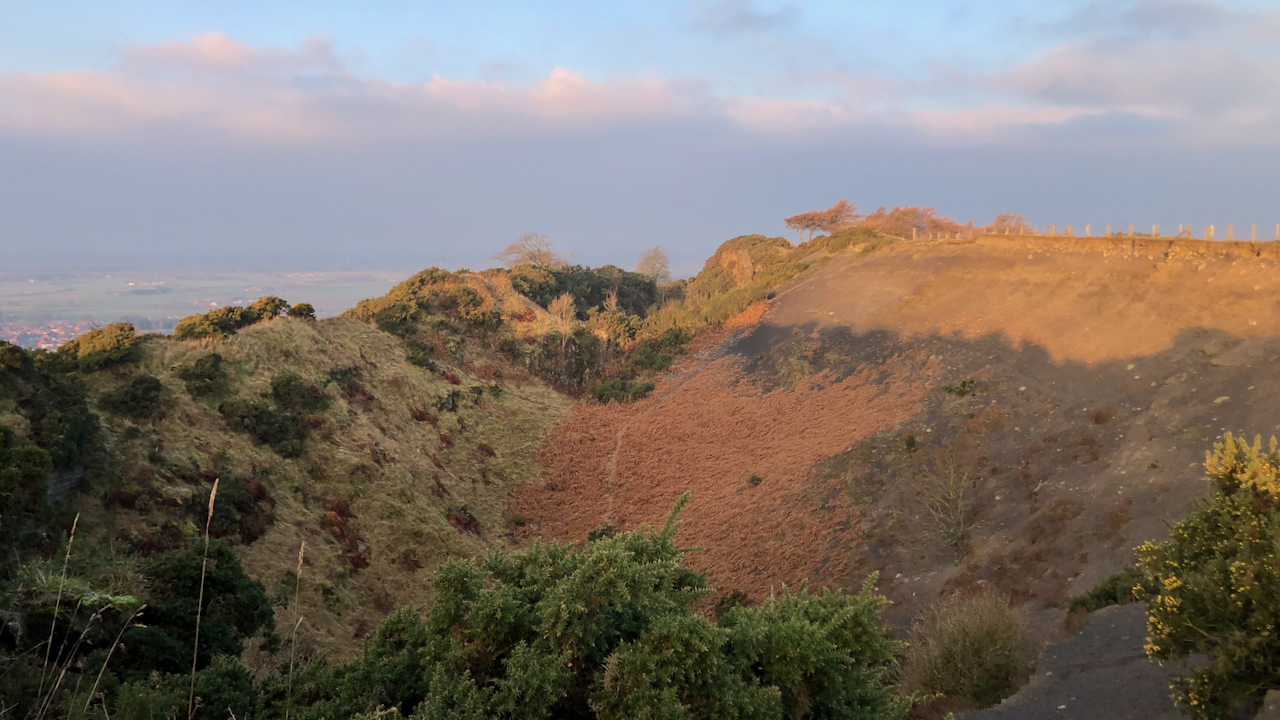A super morning, dry and sunny with some noticeable southerly winds. To the west, a large bank of cloud looks ominous but kept its distance.
The quarry, now under the custodianship of the National Trust, is the result of the extensive extraction of Whinstone or dolerite, an extremely hard igneous rock that was ideal for road maintenance. Sandstone would have broken down into sand under the action of cartwheels.
Up to the 19th century, the maintenance of roads fell on the local populace. In fact, in 1839, Great Ayton was taken to Court for not doing so1‘Yorkshire Summer Assizes. | Leeds Mercury | Saturday 20 July 1839 | British Newspaper Archive’. 2023. Britishnewspaperarchive.co.uk <https://www.britishnewspaperarchive.co.uk/viewer/bl/0000076/18390720/022/0007> [accessed 13 February 2023]. Whinstone was used throughout Cleveland. It was sometimes referred to as flintstone as it could be ‘napped’ (like flint) into blocks or setts which could be laid to form a durable road surface.
The coming of the railway meant that whinstone could be transported easily further afield and so attracted the attention of the Leeds Corporation which acquired Cliff Rigg Quarry to pave its streets.
The basaltic dyke originated about 56 million years ago from a large magma chamber beneath the island of Mull 370 km. away. It’s about 25 metres thick and the theory is that it was emplaced over a very short period of as little as 1-5 days2Geological Conservation Review. Volume 4: British Tertiary Volcanic Province Chapter 7: Other Tertiary sites Site: Langbaurgh Ridge and Cliff Ridge (GCR ID: 730). Available online at http://www.jncc.gov.uk/page-2731 © JNCC 1980–2007. The dyke continues eastwards ending somewhere under the North Sea off Whitby.
The quarry was abandoned in about 1918 but re-opened in the early 1970s, to provide aggregate for the Ingleby Bypass3o’Sullivan, Dan. “Great Ayton: A history of the village”. 1983. ISBN 0 9508858 0 0..
- 1‘Yorkshire Summer Assizes. | Leeds Mercury | Saturday 20 July 1839 | British Newspaper Archive’. 2023. Britishnewspaperarchive.co.uk <https://www.britishnewspaperarchive.co.uk/viewer/bl/0000076/18390720/022/0007> [accessed 13 February 2023]
- 2Geological Conservation Review. Volume 4: British Tertiary Volcanic Province Chapter 7: Other Tertiary sites Site: Langbaurgh Ridge and Cliff Ridge (GCR ID: 730). Available online at http://www.jncc.gov.uk/page-2731 © JNCC 1980–2007
- 3o’Sullivan, Dan. “Great Ayton: A history of the village”. 1983. ISBN 0 9508858 0 0.

Leave a Reply